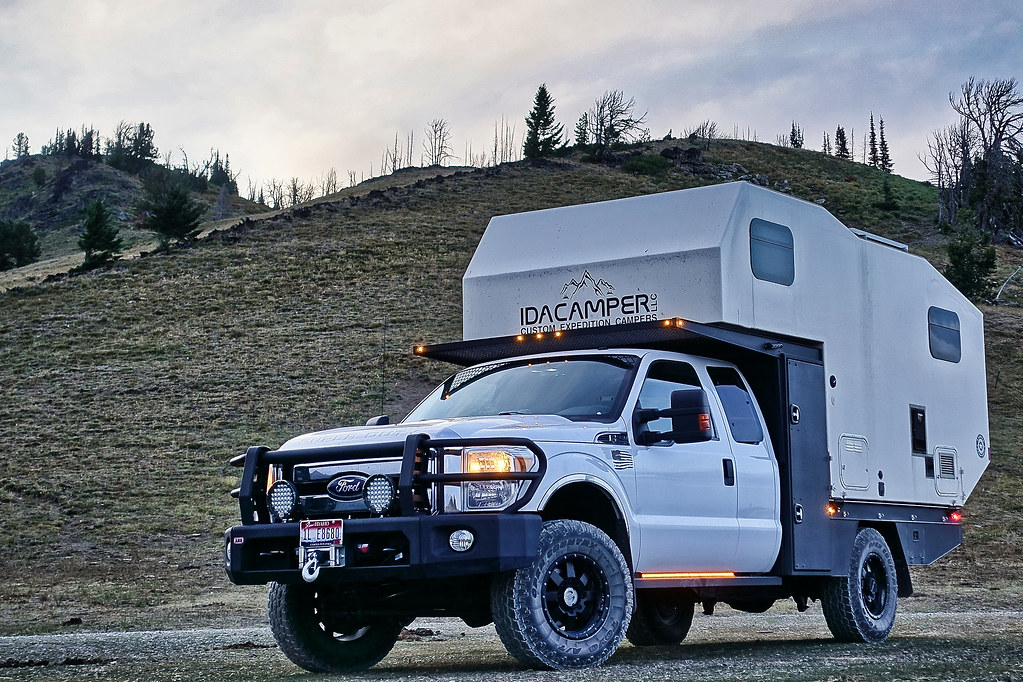Four Wheeler
New member
From my sad experience (see attached photo of my FWC after accident), I can say that even without the approximate 5" lift flat beds generally require above my 2004 Tundra 4WD Double Cab stock bed, CG can be a problem. My platform for the FWC raised the camper 3" above the sides of the bed unnecessarily, which I believe increased the COG height enough to make the swerve less controllable. I avoided a car swerving into my rig but couldn't control the resultant sway/instability. The oncoming, thundering 18-wheelers scared but avoided me despite the 3 blocked lanes!
I am considering a flat bed to replace the damaged stock one on my Tundra, so I can add boxes for storage & carry bikes/gas cans in front of my my current 2013 Hawk slide-in. The mass produced flat beds I've seen sit above the tires, and raise the COG between 3-6 inches above the stock beds depending on model & different estimates. As you can imagine, since I escaped the recent tip-over with little damage (though the camper was totaled and truck took substantial repair), I'm grateful and not feeling like risking anything like that in the future. BTW I've added a sway bar, heavier duty Bilsteine 1500 shocks, and airbags to assist with stability.
SOOOO...anyone have any experiences, leads, expertise or understanding about these issues? Have others endured turn-overs as pictured below? I've been unable to find a mass produced or affordable custom flat bed that can actually anchor directly to the Tundra base & around the wheels, and thus keep the COG lower. I'm a newbie to these issues, so any tips or opinions much appreciated!
Allan
I am considering a flat bed to replace the damaged stock one on my Tundra, so I can add boxes for storage & carry bikes/gas cans in front of my my current 2013 Hawk slide-in. The mass produced flat beds I've seen sit above the tires, and raise the COG between 3-6 inches above the stock beds depending on model & different estimates. As you can imagine, since I escaped the recent tip-over with little damage (though the camper was totaled and truck took substantial repair), I'm grateful and not feeling like risking anything like that in the future. BTW I've added a sway bar, heavier duty Bilsteine 1500 shocks, and airbags to assist with stability.
SOOOO...anyone have any experiences, leads, expertise or understanding about these issues? Have others endured turn-overs as pictured below? I've been unable to find a mass produced or affordable custom flat bed that can actually anchor directly to the Tundra base & around the wheels, and thus keep the COG lower. I'm a newbie to these issues, so any tips or opinions much appreciated!
Allan





